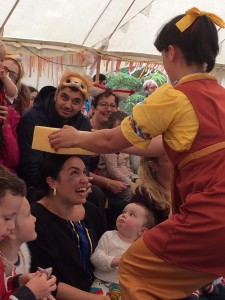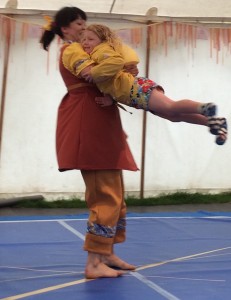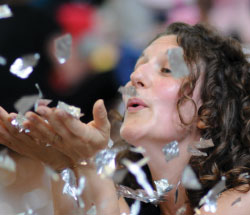Today’s job has been to unpick the improvisation and interactions in the show and develop a really solid working practice so that when the show goes out, the beauty of dancing with very young children and engaging them as authentic co-authors of the show is infused throughout the piece.

The ways we engage children as audiences in theatre is typically through the visual (especially in dance), and the auditory (especially in theatre). And we’re adding the third way – the kinaesthetic. As dancers we use our bodies to learn so much about another body. We use proprioceptive skills to ‘feel’ what a person is thinking by the nuances of the way their body moves. You can tell is a child is OK about being lifted by the way their shoulder blades move, just as you can tell if someone is with you as you take their hand by the grasp that they offer.

The sense of touch offers us as theatre makers our third way to engage audiences. Babies and young children see, they hear, but with our work they also feel the show. We tap, squash, lift and spin them. We hide, roll, wobble and jump with them. And we give them space to find and show all the other ways they’d like to explore our show.

We have lot of tools we use to engage and delight our young audiences; change of pace, lights, music. But the sense of touch is universally, simply and majestically what makes us human. It connects us and feeds us and for that reason it has it’s place in theatre.
“It is not our eyes that tell us about the reality of the world, but touch. We learn the world through touch. It is what lets us know that we are here, that we and other things have substance. We touch and are touched by the world, and we grow and become what we are through the complex world of touch – touch has depth, colour and range, and with touch we can feel through the surface of things to what lies beyond – we are aware of the laters of things. What we see we know because we have touched it or something like it at some point. Touch is what connects us to this world and to each other – it communicates where words fail us. It is something that comes naturally to children – they learn the world through touching it and connecting how something looks with how it feels. To celebrate and champion touch is to celebrate the substance rather than the surface of life”
Charlie Morrisey

